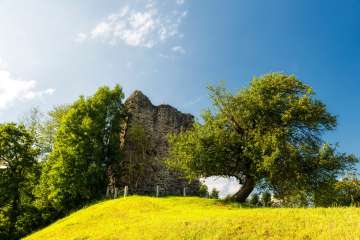
For a long time, castle and palace ruins were often just piles of rubble and were used as a cheap source of building materials. Today, however, these historic sites exude a special mystique and invite you to immerse yourself in times long past. Thurgau is home to many such fascinating places that bring history to life.
In Thurgau , nature and culture merge to create a unique experience. Discover idyllic landscapes, historical sites and living traditions in a diverse region.
This article was created in collaboration with thurgaukultur.ch.